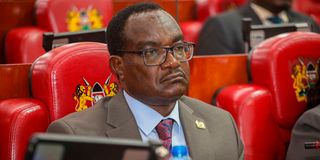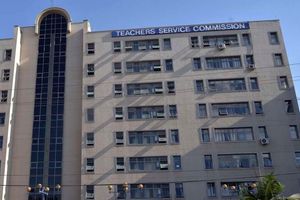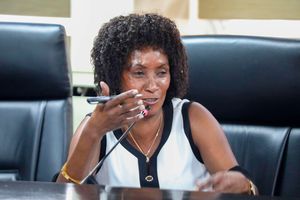
Education Cabinet Secretary Julius Migos Ogamba when he appeared before the National Assembly Committee on Health at Parliament Buildings, Nairobi on April 24, 2025.
Half of all trained and registered teachers in Kenya are currently unemployed despite public schools facing serious staffing challenges, raising concerns over job absorption and planning in the education sector.
A case of need in spite of abundance, Education Cabinet Secretary Julius Ogamba has revealed that there are 343,485 registered teachers who are not on the payroll of the Teachers Service Commission (TSC), the highest number being those trained for Early Childhood Development Education (ECDE). The CS released the data when he appeared before the Senate to answer questions from members.
“An analysis of the teacher register indicates that there are a total of 343,485 registered teachers who are not employed by the TSC. The commission has not obtained data of how many ECDE teachers have been employed by the county governments and is in the process of ascertaining the data per county,” Mr Ogamba said.
According to the data, there are 134,914 ECDE teachers who are not employed by the TSC. Mr Ogamba noted that ECDE teachers fall under the jurisdiction of county governments and are not directly employed by the TSC. However, he acknowledged that it has not yet obtained data on how many ECDE teachers have been employed by counties.
Additionally, 84,510 post-primary teachers are not on TSC payroll as well as 124,061 primary school teachers. However, the CS did not give a breakdown of the data per region.
“The commission has also indicated that it has not yet compiled data of unemployed registered teachers per county. This information can be supplied once the data is compiled,” he said.
The CS further noted that although schools face teacher shortages, the employment of qualified teachers in the public sector is influenced by several factors, including budgetary allocation, the availability of funds, and the existence of vacancies in authorised establishments.
“The commission actively monitors teacher shortages across schools and ensures the immediate replacement of teachers who leave, ensuring continuity in curriculum delivery,” said Mr Ogamba.
“In line with the government's goal of equipping graduates with practical skills, the commission engages unemployed teachers through an internship programme. Governed by the Teacher Internship Policy and Guidelines of 2019, this initiative has seen 94,300 teacher interns since its launch, providing valuable hands-on experience and improving job readiness,” he added.
According to the Economic Survey 2025, enrolment in pre-primary schools increased to 2,914,000 in 2024 from 2,885,000 in 2023. Primary and junior school enrolment grew by 3.2 percent to reach 10,733,000 learners in 2024, while enrolment in secondary schools rose by 5.2 percent to 4,321,000 during the same period.
However, the number of teachers in public primary schools decreased by 3.2 percent to 212,602 in 2024. In contrast, the number of teachers in public secondary schools and teacher training colleges rose from 125,563 in 2023 to 130,818 in 2024.
Mr Ogamba highlighted key measures aimed at tackling the low absorption rate of teachers, particularly those who have remained jobless since 2017. This comes amid growing concerns over the employment challenges facing qualified teachers in the public sector.
"The recruitment of teachers across the country is premised on several factors, including the availability of funds and the existence of vacancies in authorised establishments," he said.
The CS also emphasised that during recruitment exercises, priority is given to those who graduated earlier, especially those who have been unemployed for extended periods, in an effort to reduce long-term unemployment and promote fairness in the recruitment process.
Regarding efforts to address regional disparities in teacher employment, the CS noted that the TSC continually monitors staffing levels and advises the Ministry of Education on shortages in specific subjects and areas. “The recruitment process also takes into account the evolving curriculum demands and regional disparities, ensuring that teacher deployment is balanced across the country,” the CS stated.
Ms Nancy Macharia, the TSC chief executive, recently told Parliament that the country is not only facing a shortage of 98,261 tutors but also lacking qualified and trained personnel.
“Currently, the teacher shortage stands at 98,261, including junior school teachers. This number is anticipated to rise in 2026 following the roll out of senior schools. TSC has not achieved the optimal number of teachers since its establishment hence the need for more budgetary allocations,” she said.
The revelation came on the day the commission refuted claims that MPs have taken up the role of employment as they are the ones who have been dishing out TSC hiring letters.
In October 2024, the TSC said it received 314,117 applications for 46,000 advertised teacher posts between October 1 and 8.
Ms Macharia said of these applications, 93,646 were for primary teacher posts against the 6,000 advertised, while 144,177 were for junior secondary teachers against the 39,550 posts advertised.
The TSC further received 76,294 applications for the 450 secondary school teacher posts it advertised, she told MPs.







